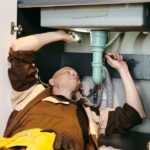The United States EPA ranks indoor pollution as one of the top five environmental risks to public health in official reports. This has brought about the need to monitor and track indoor pollution to save lives and billions of dollars in productivity loss and annual health costs. This gave rise to the new company VizAeras and the technology it brings with it, which aims to monitor levels of indoor pollution to ensure the quality of air people breathe inside any given home or building.
VizAeras, which translates “Visual Air”, operates on the premise that indoor air quality affects up to 50% of commercial buildings in the United States and causes over 10 million lost workdays per year. Furthermore, on a global scale, about 3.8 million people die yearly due to indoor air pollution. This spurred VizAeras’ CEO, Carl Tautenhahn, to establish the company, champion different technologies and apply for their patents so he could contribute to the betterment of the modern world.
VizAeras’ technology aims to reduce indoor pollution levels by giving intending occupants of a particular space the chance to measure the level of pollution in a building before entering. The company’s proprietary indoor environmental quality (IEQ) product has been listed for a funding campaign on StartEngine. This product is designed to bring more transparency, awareness, and access to healthy building conditions while creating safer, healthier, and more productive spaces for occupants.
VizAeras has also been recognized at the annual IMPACT 21 Digital Marketing Conference, where the company received the award for “Best IoT Indoor Air Quality Monitor.” The company is committed to passing on knowledge to parents, employers, schools, owners of public buildings about how vital knowing indoor pollution levels is. In Carl’s words, “It truly affects our health, well-being, personal productivity, test scores, and even business profits.”
Carl Tautenhahn’s goal with VizAeras and its product is to make it a part of everyone’s lifestyle. He refers to how many people wear one form of smart device to monitor their health and body activities. He would like to see a world where people are heavily conscious about the air they breathe indoors or what sort of air is in the building they’re about to get into. VizAeras also adds greater transparency to the monitoring as it is currently the only indoor air quality or IEQ device on the market that allows simple remote monitoring and quick-scan QR code access for any commercial building. The product also has an easy-to-use share and compare feature that allows users to monitor and track indoor pollution at the most frequent locations they visit.
VizAeras gives everyone all they need to protect themselves and take necessary precautions whenever they spot dangerous pollution levels. “We should be monitoring exposure to harmful pollution and the quality of the air we breathe indoors. I see VizAeras mapping, tracking, and monitoring indoor environmental conditions and protecting the most valuable assets inside a building—the occupants,” Carl said. “There has never been a greater need for the ability to monitor, access easily, share, compare, and promote healthy indoor environments for our homes, classrooms, and commercial buildings from any device, in real-time.
The ultimate goal for VizAeras is a national takeover and global domination while making VizAeras a staple in every home and business building as a must-have product to ensure quality health. While Google mapped “The Great Outdoors”, VizAeras intends to map and track IEQ conditions for “The Great Indoors’ ‘ where we live, work, learn, heal, pray, and play.
More information about VizAeras can be found on its website here. You can also watch this YouTube video to learn more about the indôr product and support the brand’s crowdfunding efforts at StartEngine.
















